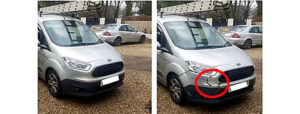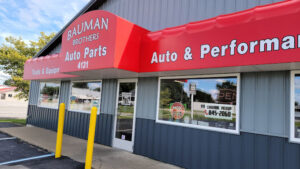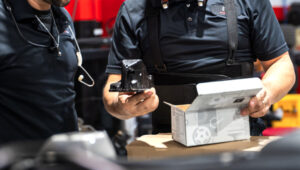What’s changing is product handling for automotive service and repair shops, which means regulations, care and treatment are about to become more expensive
If you’ve been watching the news recently, you may have seen that May 11, 2023, was an important day. That’s the day President Joe Biden formally declared both the public health emergency and the national state of emergency for COVID-19 over. This announcement came shortly after the EPA announced a more ambitious effort to reduce air pollution from vehicles starting with model year 2027.

Unfortunately, the COVID-19 scare, and air quality anxiety is NOT going anywhere. What’s changing is product handling for automotive service and repair shops, which means regulations, care and treatment are about to become more expensive.
Paint product requirements for automotive service and repair shops are some of the most comprehensive laws that we have on the books today. They are meant to create a system for controlling hazardous waste (HazWaste) from the time it is created to its final destination, from “cradle to grave.”
While most shop owners are aware that they have responsibilities under paint product handling and disposal laws, many fail to realize the requirements from the beginning to the end of product life. This lack of understanding is evidenced by the significant number of fines and penalties levied by various agencies each year on service and repair shop owners.
“Cradle to Grave” laws state that a hazardous waste generator is responsible from its appearance through its eventual disposal and beyond. Nothing will waive this responsibility. There’s no expiration date or time limit and hiring an authorized transporter to dispose of your waste does not transfer liability.
Before COVID, waste disposal issues were a matter of public concern because of the increasing amount of solid waste generation, shrinking disposal capacity, rising disposal costs, and public opposition to creating new disposal facilities.
It is vitally important for auto shop owners to maintain all transportation, storage, treatment and disposal records. If an incident occurs at any point during a product’s lifespan, you can and will be held liable.
Automotive service and repair shop pollution is generally defined by the introduction of harmful paint products into the environment. Pollutants can be solids, liquids or gases that are produced in higher concentrations than normal, thus reducing the quality of air, water or soil. It is important to understand that Earth’s atmosphere (air), hydrosphere (water), lithosphere (rock and soil) and biota (plants and animals) are interconnected, meaning that by causing harm to one of these components it leads to potential harm to others.
Because all living things from microbes to humans depend on the Earth’s resources, it is easy to understand that when the very basic ones like air and water are polluted, their well-being is subsequently threatened, potentially causing cascading negative effects.
A properly licensed and community accepted waste disposal company is worth their weight in gold in helping shop owners maintain local, federal and state regulations. Selecting the right paint product disposal company can provide compliance without disruption to operations.
Step 1. Performing due diligence on your vendors is a good business practice that can limit headaches down the road. At a minimum check the following:
• Financial references — Dun & Bradstreet report, bank letter of credit, etc.
• Insurance — Ensure that they have business liability and Workers Compensation Insurance.
• Proper Licensing — EPA, Department of Toxic Substances Control, Department of Transportation.
• Regulatory Compliance — Check with the DTSC in California.
• Make sure their employees are properly trained.
Step 2. During your interview with a hazardous waste management company, it’s a good business practice to ask thorough questions. Here are some good questions to start with:
• Where will my waste be sent?
• Is the transporter and the Treatment, Storage and Disposal Facility (TSDF) the same company?
• Will the hazardous waste be delivered to the TSDF the same day?
• Will other transporters be used to deliver the hazardous waste to the TSDF?
• Will the hazardous waste be stored in a 10-day transfer site?
• Will the transporter or TSDF assist in the completion of the uniform hazardous waste manifest?
Step 3. Follow up with all references and check to see how satisfied other auto service and repair shops are with the company’s services, employees and the quality of their work. Make sure that you ask the company to provide references that have similar waste streams.
Step 4. Once you have hired a qualified HazWaste management company, it is a good business practice to conduct a yearly checkup with the Registered Hazardous Waste Transporter Database. Any business can run into rough patches and their service can become unreliable. With fines and investigations on the rise, it is more important than ever to work with a reliable company. Make sure that you do your part to ensure that the company is performing.
REMEMBER: Maintaining compliance with your “cradle to grave” requirements cannot be offloaded to your hazardous waste vendor. You have an absolute obligation and liability as the generator to ensure the regulations are followed.
Step 5. It’s important to conduct periodic inspections of the storage methods and storage areas. For Small and Large Quantity Generators of hazardous waste, it’s a regulatory requirement that these inspections be done weekly. Performing weekly inspections of hazardous waste storage will not only help manage waste streams and minimize the risk of local, state and federal fines, but it will also help identify any small problems within the storage areas and prevent them from turning into big, costly problems.
The Resource Conservation and Recovery Act (RCRA) is one of the most comprehensive laws that we have on the books today. When the act was created and passed by the U.S. Congress in 1976, it was meant to create a system for controlling hazardous waste from the time it is generated to its final destination, from “cradle to grave.”
The following checklist will help a service and repair shop owner steer clear of potential accidents, while also making sure they are meeting the intended EPA, OSHA and NFPA requirements:
• Are containers closed?
• Are containers properly labeled and dated?
• Are containers free of spillage and leakage?
• Are containers and waste compatible?
• Is there adequate aisle space between storage containers?
• Are required signs legible and posted?
• Is spill equipment available?
• Is record keeping procedure functional?
For more information
Interested parties can download more Small Business Assistance information at https://www.recslock.com/ or go to: https://www.environmentallawandpolicy.com/2019/06/epa-announces-national-compliance-initiatives/










Comments are closed.